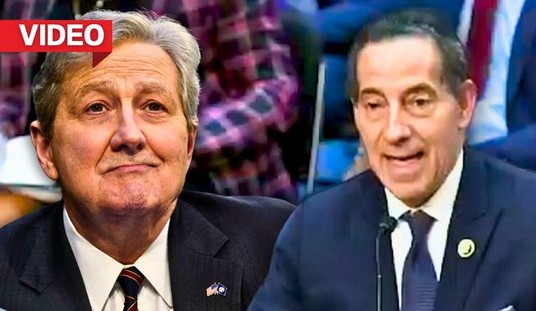The standard caveat issued by those who advocate tight immigration restrictions is that while they support legal immigration, they want to crack down on unauthorized immigration. Now, some immigration restrictionists are taking it a step further in opposing even legal immigration.
The Federation for American Immigration Reform (FAIR) has sponsored a pledge for political candidates to oppose legal immigration as well as amnesty for unauthorized immigrants. FAIR’s pledge has already garnered some signatories like Mississippi state senator Chris McDaniel (R) and Nebraska Senatorial primary candidate Shane Osborn (R) who failed to ride the supposed anti-immigration polls into elected office.
American principles implore us to oppose such an anti-immigration pledge. Indeed, one of King George III’s many “injuries and usurpations” listed in the Declaration of Independence was “obstructing the Laws for Naturalization of Foreigners” and “refusing to pass others to encourage their migration.”
The very first Congress passed the Naturalization Act of 1790, which had zero restrictions on immigration. You read that right: the first immigration law passed in the United States, by many of the framers themselves, supported open immigration. It shamefully restricted citizenship to white residents, thus excluding indentured servants, slaves, and former slaves, but there were no restrictions on who could come here and work.
Restrictions on naturalization were soon loosened even further. The 14th Amendment to the Constitution granted citizenship to freed slaves and their descendants and effectively extended citizenship to all children of non-naturalized immigrants regardless of race.. Finally, in 1898 the Supreme Court ruled, in the case of United States v. Wong Kim Ark, that all children of immigrants born under U.S. jurisdiction were citizens regardless of race.
Recommended
But while the racial requirements for citizenship were being stripped away, successive Congresses began to break with America’s traditionally open immigration system. The Page Act in 1875 barred the immigration of contracted laborers, prostitutes, and former convicts in their country of origin. The 1882 Chinese Exclusion Act halted Chinese immigration while agreements with Japan halted Japanese immigration in 1907.
Waves of immigrants from Eastern and Southern Europe came to dominate immigration flows in the early 20th century, prompting Progressives, eugenicists, anti-Catholics, populists, prohibitionists, and labor unionists to support numerical quotas on immigrants. They succeeded with the Emergency Quota Act of 1921, which imposed numerical limits on immigration for the first time.
Since then these immigration restrictions have shed their overt racial tones but have morphed into a complicated and restrictive system that makes legal immigration virtually impossible for most would-be immigrants. As Justice Harry E. Hall Jr. wrote, “With only a small degree of hyperbole, the immigration laws have been termed ‘second only to the Internal Revenue Code in complexity.’ A lawyer is often the only person who could thread the labyrinth.”
Rather than move our immigration policies more toward those envisioned by the framers, the FAIR pledge seeks to push our system more toward intense government regulation and restriction.
FAIR’s pledge also asks candidates to turn against free markets. Less regulated movement of workers, entrepreneurs, and investors across borders is as essential to free markets as low taxes and freer trade. The famous term laissez faire, the rallying cry of free-marketeers around the world, was originally tied with the phrase laissez passer – meaning the freedom to move to economic opportunity. Freer movement of people accompanies economic freedom and vice versa.
Immigration restrictions are historically correlated with growth in big government. The New Deal happened after legal immigration from Europe was virtually halted in 1921 and the Great Society welfare programs of the mid-1960s were passed when the percentage of immigrants in the U.S. was at its lowest nadir in history.
Furthermore, immigrants and their descendants have not increased the size of individual welfare benefits or welfare budgets in the states. Some states with high immigrant flows, like California and New York, do have expanding welfare states. But others with lots of immigrants, like Texas and Florida, are moderating welfare benefits. Similarly, global immigration usually precedes increases in economic freedom.
The United States can have a smaller government and freer immigration. Indeed, freer immigration would decrease the government’s role in regulating the workforce while being consistent with the pro-immigration sentiments of the framers of the Constitution.
FAIR’s anti-immigration pledge echoes the political movement of a century ago that succeeded in reversing the relatively free immigration policy supported by America’s Founders. It would be a tragedy to let the anti-immigration principles of FAIR’s pledge influence American policy again.


